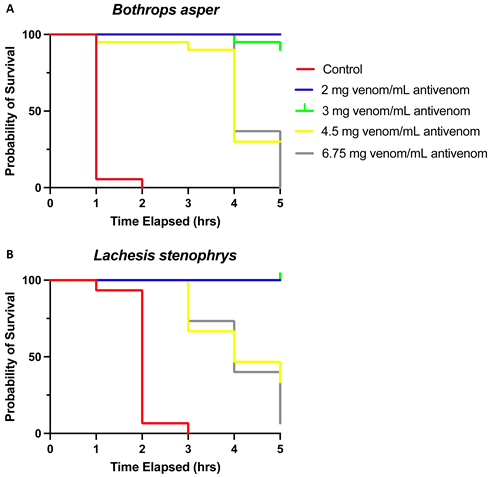Correction: De Jesus et al. Body Temperature Drop as a Humane Endpoint in Snake Venom-Lethality Neutralization Tests. Toxins 2023, 15, 525
Error in Figure
 |
|
Reference
- De Jesus, R.; Tratner, A.E.; Madrid, A.; Rivera, A.; Navas, G.E.; Lleonart, R.; Britton, G.B.; Fernández, P.L. Body Temperature Drop as a Humane Endpoint in Snake Venom-Lethality Neutralization Tests. Toxins 2023, 15, 525. [Google Scholar] [CrossRef] [PubMed]

Disclaimer/Publisher’s Note: The statements, opinions and data contained in all publications are solely those of the individual author(s) and contributor(s) and not of MDPI and/or the editor(s). MDPI and/or the editor(s) disclaim responsibility for any injury to people or property resulting from any ideas, methods, instructions or products referred to in the content. |
© 2024 by the authors. Licensee MDPI, Basel, Switzerland. This article is an open access article distributed under the terms and conditions of the Creative Commons Attribution (CC BY) license (https://creativecommons.org/licenses/by/4.0/).
Share and Cite
De Jesus, R.; Tratner, A.E.; Madrid, A.; Rivera-Mondragón, A.; Navas, G.E.; Lleonart, R.; Britton, G.B.; Fernández, P.L. Correction: De Jesus et al. Body Temperature Drop as a Humane Endpoint in Snake Venom-Lethality Neutralization Tests. Toxins 2023, 15, 525. Toxins 2024, 16, 25. https://doi.org/10.3390/toxins16010025
De Jesus R, Tratner AE, Madrid A, Rivera-Mondragón A, Navas GE, Lleonart R, Britton GB, Fernández PL. Correction: De Jesus et al. Body Temperature Drop as a Humane Endpoint in Snake Venom-Lethality Neutralization Tests. Toxins 2023, 15, 525. Toxins. 2024; 16(1):25. https://doi.org/10.3390/toxins16010025
Chicago/Turabian StyleDe Jesus, Rosa, Adam E. Tratner, Alanna Madrid, Andrés Rivera-Mondragón, Goy E. Navas, Ricardo Lleonart, Gabrielle B. Britton, and Patricia L. Fernández. 2024. "Correction: De Jesus et al. Body Temperature Drop as a Humane Endpoint in Snake Venom-Lethality Neutralization Tests. Toxins 2023, 15, 525" Toxins 16, no. 1: 25. https://doi.org/10.3390/toxins16010025
APA StyleDe Jesus, R., Tratner, A. E., Madrid, A., Rivera-Mondragón, A., Navas, G. E., Lleonart, R., Britton, G. B., & Fernández, P. L. (2024). Correction: De Jesus et al. Body Temperature Drop as a Humane Endpoint in Snake Venom-Lethality Neutralization Tests. Toxins 2023, 15, 525. Toxins, 16(1), 25. https://doi.org/10.3390/toxins16010025




